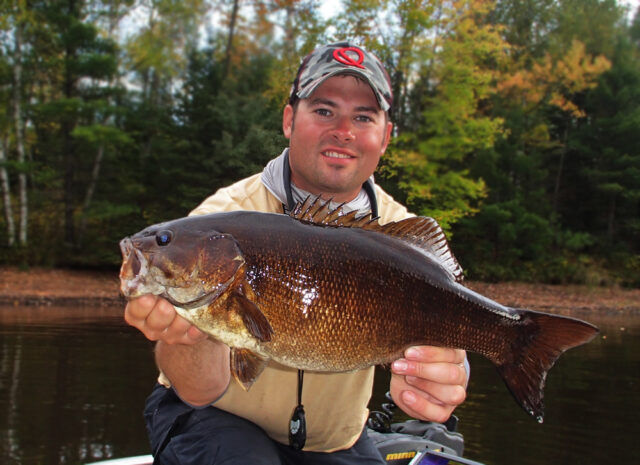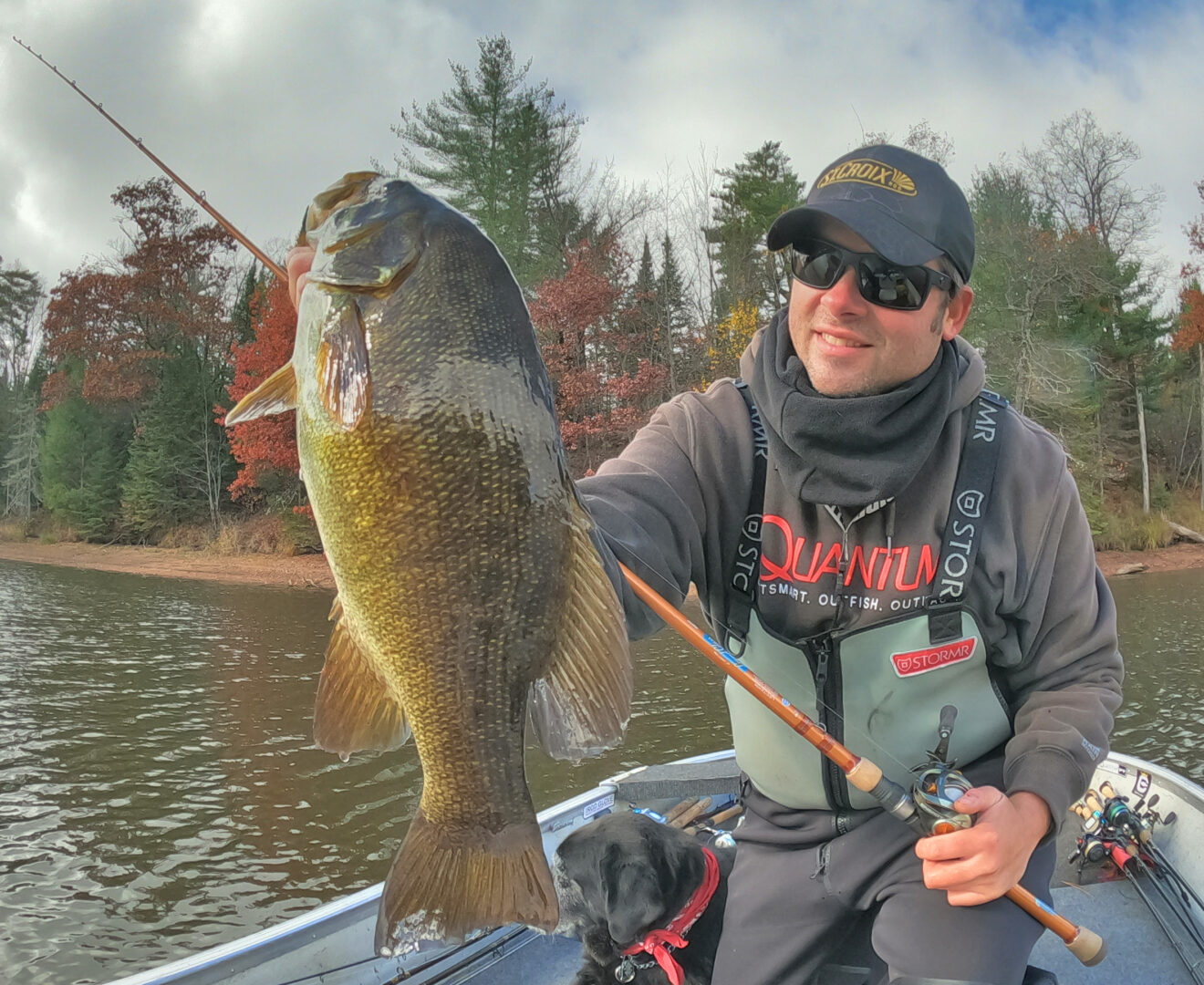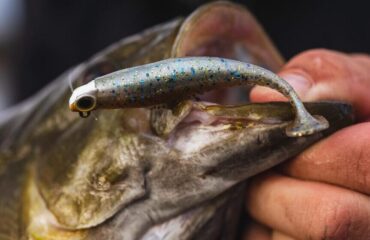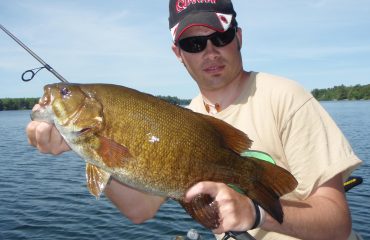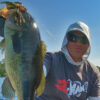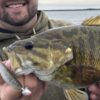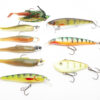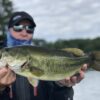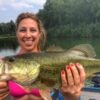Drought and Drawdown Smallmouths
Drought and drawdown-plagued waterways present obstacles to finding and catching fish. Welcome to 2023 on the Wisconsin River system.
Whether due to drought or it’s the annual fall drawdown, many anglers fishing rivers and reservoirs for smallmouth are challenged by these situations.
Anglers fishing these waterways on a regular basis don’t always pay attention to drawdowns, and fail to really notice them. On Wisconsin’s flowages and river systems, water level fluctuations are common throughout the year. During the summer months, they could recede as a result of drought. Meanwhile in September and October, they could recede up to several feet due to drawdown.
Most of Wisconsin’s flowages are water retention reservoirs. They were formed during the 1920’s and 1930’s when dams were constructed on the state’s largest river systems to help control water levels and prevent flooding. During the fall months their water gets released downstream, freeing reservoir retention space to accommodate for the winter and spring seasons. In spring, these flowages fill with runoff, which is then released downstream throughout summer and fall to help augment flows on the river systems. The drawdown process takes up to a few weeks to complete, confusing anglers along the way.
On the surface, it seems that lower water levels should improve fishing, constraining fish with less water volume and further concentrating them. Soon to be discovered, traditional near-shore hot spots dry up. As fish are forced to migrate into deeper water, holes, and channel areas, so should you.
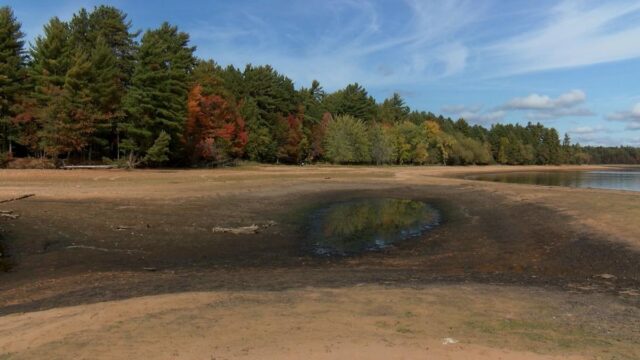
River Systems
Structure is the key element in making sense of the drawdown. River and flowage smallmouths are structure oriented in all aspects of life, never occupying featureless areas.
At full pool for instance, anglers can meander downstream or along shore, catching fish across several areas. When drawdown occurs and these near-shore spots dry up, those same fish occupying their full pool locations will seek the same types of attractions. Forced to find deeper water, their new locations will be secondary or third-tier points, deep rock humps, ledges, channel holes, and possibly the basins of old lake beds. As water levels drop further, smallmouths move progressively deeper to the next main structures available in the same general area. In rivers, smallmouths will push into deep holes to stage into before eventually migrating into the downriver flowages for their overwintering. At this time, 90% of the fish will only occupy 10% of the fishery.
On river systems, my best drawdown locations are often associated with mid-river holes formed by the channel, and bends. A deep hole in some river systems can be considered 4 to 8 ft. If the area is significantly deeper and more structure-filled than what’s available in the rest of the river, the hole will concentrate smallmouths at some point. Additionally, outer bends possess the deeper, calmer waters smallmouths favor in fall. Even if unsuitable for overwintering, smallmouths will hold in these areas for up to several weeks before leaving the system in entirety en route to the flowage downstream. At times, majority of a pool’s smallmouth can be confined in only a small percentile of it. Be observant for slight changes in depth, current speed, or bottom composition, and note where fish are caught from the hole. Similar locations are frequently productive through the entire river, if available.
Anglers who’ve succeeded finding deep structure have it easier during drawdowns than do bank beaters and shallow water enthusiasts. Successful fishing on receding waters depends on the ability to eliminate water so that the only areas to be fished in are locations smallmouths are most apt to be. Dramatic water level reductions naturally do a lot of this work for you, with up to 90% of the system being vacated. Due to their heavier concentrating, covering water will no longer be necessary.
When to Go This Fall
During the fall drawdown months, the highest feeding activity occurs during midday and afternoon hours as water temperatures peak. Prioritize these fishing times for best fishing results. Feeding windows can prolong under stable conditions.
Because smallmouths are so heavily concentrated and vulnerable after drawdown, catch and release is absolutely necessary. Catch and keep fishing over the course of an entire seasonal period will ruin the fishery for an entire generation.
By studying the migration patterns and movements of smallmouths on river systems and reservoirs during drawdown, and adjusting your fishing locations accordingly, you could experience some of the best fall fishing available. Drawdowns also eliminate fishing pressure from other anglers and annoying recreational traffic, which is a major reason to continue fishing these waters until the open water fishing season concludes.
